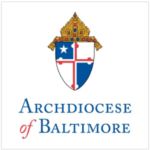On March 13, 2015, the second anniversary of his election, Pope Francis announced the celebration of an “extraordinary Holy Year,” a “Jubilee of Mercy,” which begins with the opening of the Holy Door of St. Peter’s Basilica in Rome on December 8, the Feast of the Immaculate Conception and ends on November 20, 2016, the Solemnity of Our Lord Jesus Christ, King of the Universe.
In announcing the Year of Mercy, Pope Francis said, “I am convinced that the whole Church will find in this jubilee the joy needed to rediscover and make fruitful the mercy of God, with which all of us are called to give consolation to every man and woman of our time. From this moment, we entrust this holy year to the Mother of Mercy, that she might turn her gaze upon us and watch over our journey.”
During this Jubilee, the Pope invites Catholics throughout the world to engage in the church’s corporal works of mercy (feed the hungry, give drink to the thirsty, clothe the naked, harbor the harborless, visit the sick, ransom the captive, and bury the dead) and spiritual works of mercy (instruct the ignorant, counsel the doubtful, admonish sinners, bear wrongs patiently, forgive offences willingly, comfort the afflicted, pray for the living and the dead).
The opening of the Jubilee of Mercy coincides with the 50th anniversary of the closing of the Second Vatican Council in 1965.
With the Jubilee of Mercy, Pope Francis focuses attention upon the merciful God who invites all men and women to return to Him. The encounter with God inspires in one the virtue of Mercy. Mercy is a theme very dear to Pope Francis, which is expressed in his episcopal motto, “miserando atque eligendo” (with the eyes of mercy). The Pope, in the first Angelus address following his election, said “Feeling mercy, that this word changes everything. This is the best thing we can feel: it changes the world. A little mercy makes the world less cold and more just. We need to understand properly this mercy of God, this merciful Father who is so patient.”
The initial rite of the Jubilee is the opening of the Holy Door. This door is one which is only opened during the Holy Year and which remains closed during all other years. Each of the four major basilicas of Rome has a Holy Door: Saint Peter’s, St. John Lateran, St. Paul Outside the Walls and St. Mary Major. This rite of the opening of the Holy Door illustrates symbolically the idea that, during the jubilee, the faithful are offered an “extraordinary pathway” towards salvation.
In the Archdiocese of Baltimore, holy doors have been designated at seven locations: The Basilica of the National Shrine of the Assumption of the Blessed Virgin Mary and the Cathedral of Mary Our Queen in Baltimore, the National Shrine of St. Elizabeth Ann Seton in Emmitsburg, the Shrine of St. Anthony in Ellicott City, St. Ignatius (the historic church) in Hickory, St. John the Evangelist in Frederick, St. Mary in Annapolis, and Ss. Peter & Paul in Cumberland. These doors will be opened with special ceremonies on Sunday, December 13, 2015.
Once pilgrims have crossed through one of the Archdiocese’s eight Holy Doors or Doors of Mercy or have fulfilled one of the other conditions under which Pope Francis has granted the Jubilee indulgence (for example, performing corporal or spiritual works of mercy), in addition to the usual conditions which require a heart well-disposed for the grace to bring its desired fruits, the faithful should stop in prayer to fulfill the final actions asked for the profession of faith, and prayer for the Holy Father and his intentions.
In the ancient Hebrew tradition, the Jubilee Year, which was celebrated every 50 years, was meant to restore equality among all of the children of Israel, offering new possibilities to families which had lost their property and even their personal freedom. In addition, the Jubilee Year was a reminder to the rich that a time would come when their Israelite slaves would once again become their equals and would be able to reclaim their rights.
The Catholic tradition of the Holy Year began with Pope Boniface VIII in 1300. Boniface VIII had envisioned a Jubilee every century. From 1475 onwards—in order to allow each generation to experience at least one Holy Year—the ordinary Jubilee was to be celebrated every 25 years. However, an extraordinary Jubilee may be announced on the occasion of an event of particular importance. Until present, there have been 26 ordinary Holy Year celebrations, the last of which was the Jubilee of 2000. The custom of calling extraordinary Jubilees dates back to the XVI century. The last extraordinary Holy Years, which were celebrated during the previous century, were those in 1933, proclaimed by Pope Pius XI to celebrate XIX hundred years of Redemption and in 1983, proclaimed by John Paul II on the occasion of the 1950 years of Redemption.
Source: Fr. Thomas Rosica, C.S.B., English Language Assistant to the Holy See Press Office

